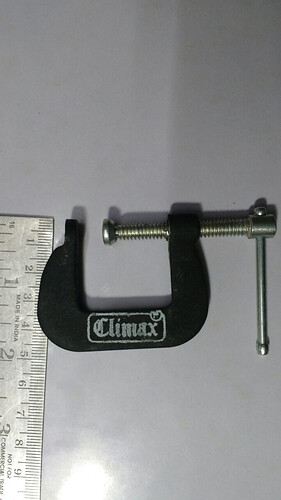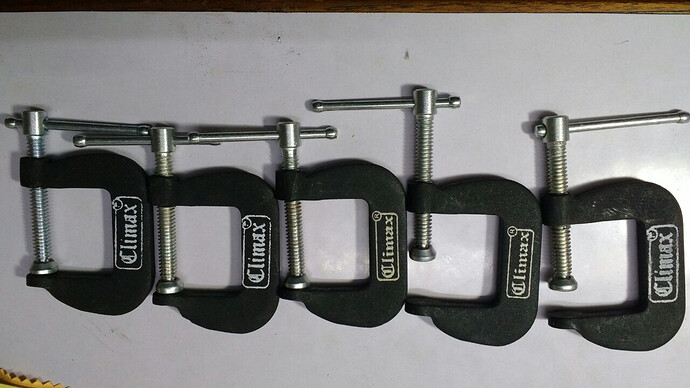Why two? Erect a horizontal platform on the lift vertex, and the saw horse can be dogged to it.
Ok. That should work too.
I wanted to avoid dogging, which would require my original socket arrangement, and instead just use two hydraulic jacks.
Come to think of it one would be less cumbersome than two jacks.
I realised that I don’t actually know the form factor of the lifts you found. Tyre puncture repairers usually use a trolley, which was in my mind when I commented. But there is also a simpler plain cylinder type. I haven’t checked the prices.
Anyhow, whichever is used, it is essential to have a single lever, so that the platform rises horizontally in a single action. I suspect that trying to make this happen with two (or four) jacks is going to be very, maybe unnecessarily, difficult.
Turns out that the car hydraulic jacks have limited vertical displacement of 12 to 16 cm. All vehicle jacks have this limit on displacement. I require a isplacement of approx 45cm.
Nonetheless an excellent, low cost and universally available method to make a lifting mechanism.
That is nearly half a meter. Are you saying the difference in ergonomic working height for two persons is so huge?
The difference for two persons is merely 10cm. But we need to work both standing and seated. Therefore the height varies from 75cm ± 10cm to 135cm ± 10cm.
I also checked PA speaker stands. Cost is reasonable -1900 to 3500 and they fit the height adjustment range, but will not be stable enough.
I think a single cylinder car jack is probably about 20cm high with a throw of around 10cm. Together with a sturdy fixed platform, within another 10cm. So, two such adjustable platforms, 60cm total. Still cheap, stackable, and likely to be very sturdy, yet straightforward to build. And it gives you what you need, in straight steps of 30cm.
Which also means, you can stack them up against a wall when not in use, if you standardise each unit (2 lifts and the saw horse) to 30cm.
Top frame for saw horse is finally done. Today I am going to add the adjustable height pieces and complete the table. Additional cross members will be added too.
Welding the 17 gauge galvanised square sections is proving to be quite problematic. Firstly the arc burns the galvanised zinc, preventing the weld puddle from welding the two pieces. Next holding the weld rod for even a fraction of a sec longer burns the section. Hence I changed the support for the legs from square section to 2mm (14 swg) x 25mm L angle (the rusty looking strips, it being easier to weld. 2mm thick material welds ok with 2.5mm welding rods. Hereafter I will use a thicker section and ungalvanised. Ungalvanised means I will have to paint to prevent rusting.
Sourcing thicker square sections will be more difficult. It will also increase costs and weight.
I’m just guessing, but gas welding is probably more suited to galvanised sections. In fact, handheld propane or butane gas welding torches are available, that eliminate the nuisance of sourcing welding gas cylinders. The link is to a foreign store, but I’ve seen similar gadgets in local hardware shops.
In fact, referencing your other post on making diy imitation jewellery, these devices are very useful for that kind of project also.
Easily available in hardware stores used by Ac mechanics for brazing copper rods and valves.
We have one in the workshop.
Yes. Using such a device will provide huge flexibility.


